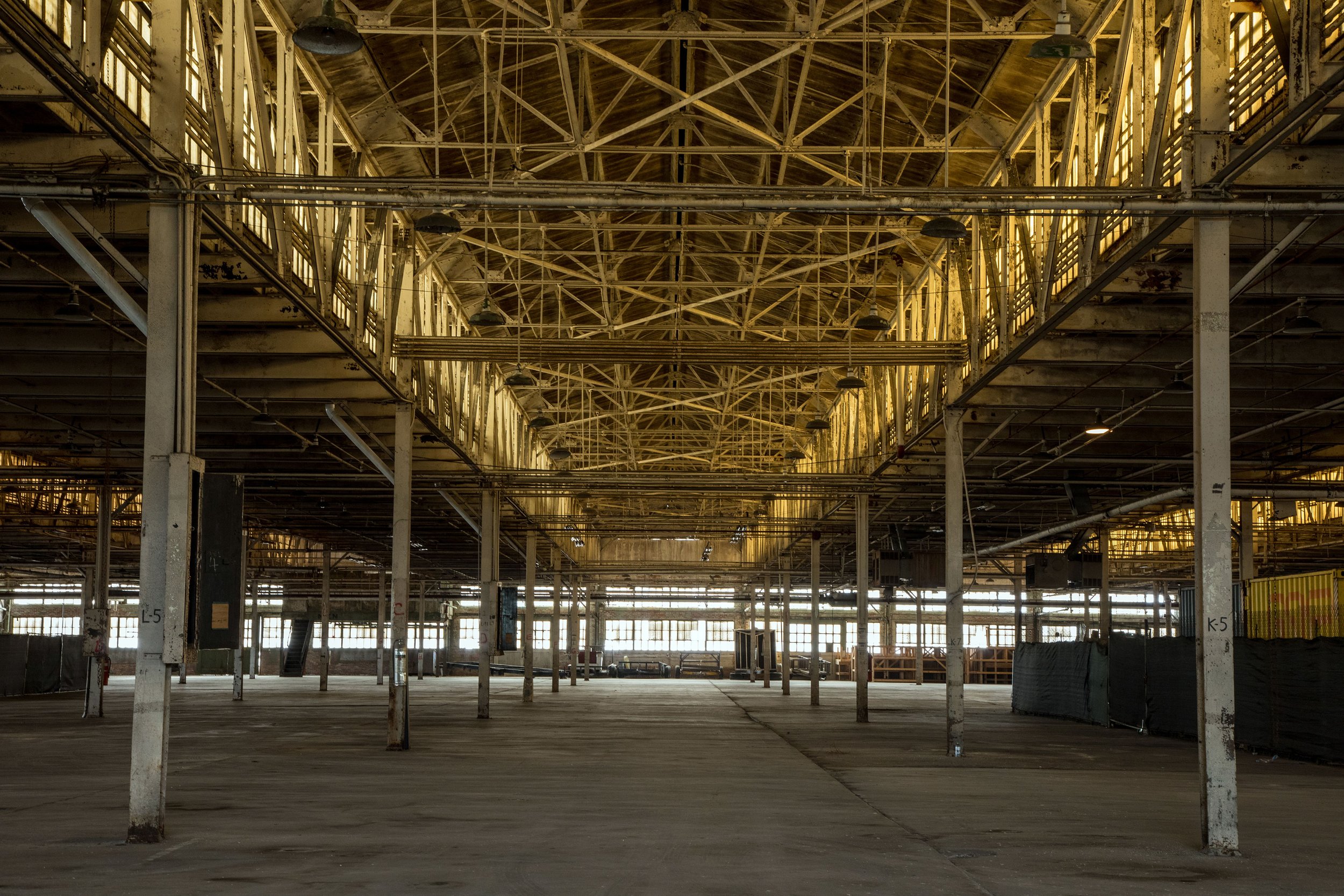History
In the early 20th century Henry Ford built assembly plants and factories throughout the nation. Arabi, just east of New Orleans provided an ideal location to export to Central and South America and offered easy access to both the Mississippi River and to rail lines.

Construction of the 225,000 Sq Ft building on 27 acres began in 1922 according to Albert Kahn’s design which called for a reinforced concrete structure with an open ground floor design and a second story facing the river for admin offices. A half-dozen gabled roof monitors over the assembly floor provided light and ventilation.
Assembly operations began at Arabi the following year. At peak production, as many as 1,000 workers turned out 300 cars per day until 1933. In subsequent years the plant was used as a warehouse by the U.S. army, a local Ford dealership and a freight storage facility.
Having developed mass production of the first affordable automobile, Ford revolutionized transportation and American industry. His intense commitment to systematically lowering costs resulted in many technical and business innovations, including a franchise system that put dealerships throughout most of North America and on six continents.


